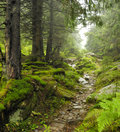|
blowfish posted:Problem: you need like 3-4 times overcapacity at least to get reasonably secure base load power, and you need to add storage to do that. That's going to increase wind/solar costs quite a bit if they are to be the backbone of your power grid. I hear this complaint a lot, but it really is something of a red herring. Renewable power constitutes 13% of total output in Australia, and most of that is from hydro plants. Realistically that problem isn't actually an issue that anyone is going to face for 50 years, even if they go full-bore into renewable wind/solar. For a society that typically doesn't plan past the next election, it's odd that we have such a fixation on wind/solar's role in the distant future.
|
|
|
|

|
| # ? May 14, 2024 00:54 |
|
QuarkJets posted:West Virginia Declares State Of Emergency After Coal Chemical Contaminates Drinking Water About as much attention as the lasting ramifications of http://en.wikipedia.org/wiki/Kingston_Fossil_Plant_coal_fly_ash_slurry_spill But hey, I have great diagrams of how Fukushima radiation is going to kill the west coast.... lol Seriously though, conventional reactor Thorium is where it's at. Has office Thug given a nice post on this? I'd like to see a bit more on how this fits in with the current nuclear fuel cycle. http://www.world-nuclear-news.org/enf_thorium_test_begins_2106131.html Zelthar fucked around with this message at 11:20 on Jan 12, 2014 |
|
|
blowfish posted:Problem: you need like 3-4 times overcapacity at least to get reasonably secure base load power, and you need to add storage to do that. http://theconversation.com/baseload-power-is-a-myth-even-intermittent-renewables-will-work-13210 quote:
|
|
|
|
|
So living in a state where nuclear fuel is produced, is there an environmentally friendly way of reopening Rocky Flats? http://en.wikipedia.org/wiki/Rocky_Flats_Plant
|
|
|
ColoradoCleric posted:So living in a state where nuclear fuel is produced, is there an environmentally friendly way of reopening Rocky Flats? http://en.wikipedia.org/wiki/Rocky_Flats_Plant Looking at it, most of the problems came from blatant safetly voilations like storing barrels in the open and lots of fires. Since this is a nuclear weapons facility, what use would you see in reopening it? Primary product was plutonium, which is normally only used in MOX fuel.
|
|
|
|
|
By the way, for those wondering what different renewables mixes on grid look like, check out this chart from the EIA's model for the US grids. It shows a less than 50% growth in installed capacity to go to 90% renewables from baseline by 2050. Most of that installed capacity growth is in wind and the reduced capacity factor of wind is already taken into account when sizing wind farms and pricing wind power. Also, in the 90% renewables model, notice that wind is producing 40% of generation and Bio-mass picks up ~15%.
|
|
|
|
I would be curious to learn what some other countries are doing to manage their current existing or decommissioned small-scale hydro stations. In Quebec there is incentives to upgrade or upkeep some older and or derelict stations by upgrading the electrical control modules, repairing old turbine shafts and creating adequate natural bypasses to allow for fish and other wildlife to pass through. Most of the power generation is used by local communities which helps on line loss.
|
|
|
|
My bad my chat is from an NREL study not an EIA one, nevertheless still legit. Also, I found an interesting paper that looks at global generation modeling, its paywalled and not as solid as NREL obviously but you can see the pretty charts! http://www.sciencedirect.com/science/article/pii/S2211467X12000314
|
|
|
|
Frogmanv2 posted:http://theconversation.com/baseload-power-is-a-myth-even-intermittent-renewables-will-work-13210 The paper says: quote:and sub-hourly generation uctuations are not modelled.. However, quote:The simulations are deterministic and quote:his agrees with a conclusion of Budischak et al. (2013), that The paper assumes perfect conditions (hey, under perfect conditions nuclear is next to free Kaal posted:I hear this complaint a lot, but it really is something of a red herring. Renewable power constitutes 13% of total output in Australia, and most of that is from hydro plants. Realistically that problem isn't actually an issue that anyone is going to face for 50 years, even if they go full-bore into renewable wind/solar. For a society that typically doesn't plan past the next election, it's odd that we have such a fixation on wind/solar's role in the distant future. However (looking at it from a "we'd like to avoid the worst of climate change" perspective) we need to be done in 50 years, not just so far along that intermittent power generation starts to matter.
|
|
|
|
If you start looking at real world conditions, well placed Wind is cheaper than Coal and Nuclear currently. The NREL study I posted the graph from pretty much is a roadmap how to do up to 90% renewables all with current technology and all with <50% overcapacity to cover renewables. All by 2050. Edit: Also the newest generation of Wind Turbines have 50% capacity factors. Trabisnikof fucked around with this message at 22:39 on Jan 13, 2014 |
|
|
|
Trabisnikof posted:If you start looking at real world conditions, well placed Wind is cheaper than Coal and Nuclear currently. Do they use similarly heroic assumptions to the glut of "100% Renewable Australia in 40 years" things? quote:Edit: Also the newest generation of Wind Turbines have 50% capacity factors. Huh, that's sweet and looks worth pursuing. How do you get 50% capacity factors though, wind doesn't blow that regularly in most places? e: are those off shore or something?
|
|
|
|
blowfish posted:Do they use similarly heroic assumptions to the glut of "100% Renewable Australia in 40 years" things? Well sited wind is the key. You don't put the wind turbines where the wind doesn't blow. The NREL stuff is legit, it just requires a little rethinking of how people assume the grid operates. Instead of being in a place where you save your hydro/biopower for peak conditions you save it for lulls in generation.
|
|
|
|
Trabisnikof posted:Well sited wind is the key. You don't put the wind turbines where the wind doesn't blow. Ok, I'm going to read the report on the weekend. In other news: Nuclear and Wind do really well in the current US weather, coal and gas plants literally freeze up
|
|
|
blowfish posted:Huh, that's sweet and looks worth pursuing. How do you get 50% capacity factors though, wind doesn't blow that regularly in most places? You could lower the official rated output for the turbine, so what would be normally be 100% at wind speed level 7 would be like 200%.
|
|
|
|
|
blowfish posted:Ok, I'm going to read the report on the weekend. Great, now future nuclear plants are going to have to prove they won't explode if they get too cold.
|
|
|
|
Trabisnikof posted:My bad my chat is from an NREL study not an EIA one, nevertheless still legit. Just had a look at it (if someone wants it, pm me). tl;dr - Paper says: assuming a worldwide heroic effort (up to 2% of GDP) and immediate rollout of maximal efficiency increases, it is in principle possible to have 95% renewable power by 2050. The whole thing should start paying for itself eventually (ie at the end of the rollout). The operative part being "in principle", because this is again a best-case scenario.
|
|
|
|
blowfish posted:Just had a look at it (if someone wants it, pm me). Yeah, I didn't think that paper included political realities. However, 2% GDP really ins't that bad of a cost for the absurd scale of the task.
|
|
|
|
Trabisnikof: is this the NREL thing you mentioned? http://www.nrel.gov/analysis/re_futures/ e: Trabisnikof posted:Yeah, I didn't think that paper included political realities. However, 2% GDP really ins't that bad of a cost for the absurd scale of the task. I'd agree on that, but good luck getting most of the world to spend roughly as much money on renewables as goes into defense... suck my woke dick fucked around with this message at 23:48 on Jan 13, 2014 |
|
|
|
blowfish posted:Trabisnikof: is this the NREL thing you mentioned? http://www.nrel.gov/analysis/re_futures/ Yes, that's the report. I think it lays out decent plans from an infrastructure perspective, obviously politics ruins everything.
|
|
|
|
Dusseldorf posted:I think the most robust method of energy storage is pumping water uphill. Just a curious question, why not use a PV farm's excess power to pump water back into lake mead? Are the turbines always running at full capacity regardless?
|
|
|
|
Herv posted:Just a curious question, why not use a PV farm's excess power to pump water back into lake mead? Hoover isn't designed to go in reverse. They also rarely run the turbines at full capacity, except during peak usage. Plus, there is rarely excess PV power since it occurs closer to peak. There is often excess wind, and pumped hydro is a good choice for storing that energy.
|
|
|
|
I thought the hardest part of the pumped water storage was you needed abuncha mountains everywhere--how feasible is it to put it all underground so you just pump the water from underground storage to surface/sub surface storage? I love all the hoops you gotta jump through when avoiding nuclear power haha.
|
|
|
|
blowfish posted:However (looking at it from a "we'd like to avoid the worst of climate change" perspective) we need to be done in 50 years, not just so far along that intermittent power generation starts to matter. Well realistically that's never going to happen. Australia is one of the best candidates for renewable energy generation, and even after going after all the low-hanging fruit they're still only expanding the market percentage* by something like two percent per year. Right now their renewable target scheme is 20% by 2020, and that includes hydropower (60% of their current renewable capacity). And Germany had a similar expansion rate over the last decade as they expanded to 25%, which is why their target is only 35% for 2020. Even if they are able to maintain their rapid rate of growth, it will still take several decades before renewable energy constitutes a majority of power generation in Germany, much less the rest of the world. Avoiding the worst of climate change, if it is possible at all, requires a global New Deal on Energy where the big industrial countries commit to massive orders of nuclear and renewable power infrastructure; or it will require an unlikely Hail Mary technological breakthrough a la environmental nanotechnology to scrub the atmosphere or fusion power generation that will immediately obsolete fossil fuel power. And given that both of those solutions lack public financial support, it seems likely that we will just have to suffer through it. Perhaps as cities incur increasingly devastating natural disasters and lowered air quality they will refocus their attentions on the issue, but given the collective shrugging in the face of annual devastating hurricanes and ecological die-offs, and industrial centers like Los Angeles or Shanghai having smog days where everyone wears masks to go outside, I think it is unlikely that we'll see much on that front. *The contribution of renewable power generation as a percentage of overall national output. Kaal fucked around with this message at 01:13 on Jan 14, 2014 |
|
|
|
Arghy posted:I thought the hardest part of the pumped water storage was you needed abuncha mountains everywhere--how feasible is it to put it all underground so you just pump the water from underground storage to surface/sub surface storage? Eh, it isn't like nuclear power doesn't have a bunch of hoops on its own and I think nuclear expansion is a good thing. Even if you have public opinion on your side, building nuclear power plants is expensive and at this point the US government really isn't interested in making that sort of investment. (Actually clean air standards have really improved the air quality in LA over time, it is still pretty bad in certain regions but SoCal if anything shows the improvements than can come with regulation.)
|
|
|
|
Besides its less about avoiding nuclear, and more about using the technology we have within the regulatory structures we have.
|
|
|
|
Trabisnikof posted:Hoover isn't designed to go in reverse. They also rarely run the turbines at full capacity, except during peak usage. Plus there's no reservoir downstream of hoover dam.
|
|
|
|
Digital War posted:Plus there's no reservoir downstream of hoover dam. There is but its tiny. I only know this because I took the tour
|
|
|
|
Pumped water storage is the worst form of energy storage except for all the others that have been tried. Pretty much the only thing it has going for it is that the energy is stored as mechanical energy.
|
|
|
|
Ardennes posted:Eh, it isn't like nuclear power doesn't have a bunch of hoops on its own and I think nuclear expansion is a good thing. Even if you have public opinion on your side, building nuclear power plants is expensive and at this point the US government really isn't interested in making that sort of investment. Yeah. At least Russia, China, India, and to a much lesser extent the US have new nuclear plants in build at all (plus places with like 1 in build each), which will ameliorate problems a bit. John McCain posted:Pumped water storage is the worst form of energy storage except for all the others that have been tried. Currently, hydro is being expanded even into biodiversity hotspots like the Balkan alluvial forests where it'll gently caress up the entire ecosystem. At least pumped storage has the advantage of just needing a body of water next to any hill (but we will find a way to put the largest pumped storage facility in the country on top of some exceedingly valuable habitats, I'm sure). suck my woke dick fucked around with this message at 07:54 on Jan 14, 2014 |
|
|
|
Ardennes posted:Eh, it isn't like nuclear power doesn't have a bunch of hoops on its own and I think nuclear expansion is a good thing. Even if you have public opinion on your side, building nuclear power plants is expensive and at this point the US government really isn't interested in making that sort of investment. It's cheaper than renewables, and you can build a facility that produces a GW of nuclear power much faster than you can build a GW of wind or solar power even if you just examine peak power for the renewables. This is important if we want to shut down as much coal power as possible as quickly as possible (we really really need to do this, it's really the most important thing) We really need renewables but we also really need nuclear power, and it gets tiresome when renewables advocates sabotage the entire environmentalism movement simply because they don't like nuclear power as much. It's a necessary evil
|
|
|
|
Imagine how loving cheap nuclear would be if all the political red-tape in the regulations were eliminated and we just had a few mass-produced standard designs...
|
|
|
|
Baronjutter posted:Imagine how loving cheap nuclear would be if all the political red-tape in the regulations were eliminated and we just had a few mass-produced standard designs... China is leading the way  We need more work on small modular reactors that can simply be loaded on a big truck...
|
|
|
|
QuarkJets posted:It's cheaper than renewables, and you can build a facility that produces a GW of nuclear power much faster than you can build a GW of wind or solar power even if you just examine peak power for the renewables. This is important if we want to shut down as much coal power as possible as quickly as possible (we really really need to do this, it's really the most important thing) I actually agree with what your saying but my point is at this point private investment isn't going to cut it. If you want mass expansion of nuclear power, it is going to have to take considerable federal funding and involvement. It ultimately comes down to money, and lots of it to build a considerable number of new reactors. I don't think it is a good idea to cannibalize current funding from other sources of energy or the budget. That said, I would actually be fine with a carbon tax used to finance construction of new reactors. Ultimately, the latest news about EPA rules is a good thing and it is going to make nuclear a more possible alternative but taking away cheap coal power.
|
|
|
|
QuarkJets posted:It's cheaper than renewables, and you can build a facility that produces a GW of nuclear power much faster than you can build a GW of wind or solar power even if you just examine peak power for the renewables. This is important if we want to shut down as much coal power as possible as quickly as possible (we really really need to do this, it's really the most important thing) Nuclear is not cheaper than Wind or Hydro using a levelized cost of electricity. Also, it is taking about 2 years to bring a 1GW wind project online in the US (Buffet's MidAmerican, its in 3 farms) and it takes about 4 months in China. When was the last time a reactor was built in the west that wasn't at least 2 years delayed? Trabisnikof fucked around with this message at 09:35 on Jan 14, 2014 |
|
|
|
Trabisnikof posted:Nuclear is not cheaper than Wind or Hydro using a levelized cost of electricity. Also, it is taking about 2 years to bring a 1GW wind project online in the US (Buffet's MidAmerican, its in 3 farms) and it takes about 4 months in China. When was the last time a reactor was built in the west that wasn't at least 2 years delayed? All of this can be laid directly at the feet of Congress regularly implementing new and harsher regulatory conditions upon nuclear operators. It shouldn't be a shock that construction gets delayed when you change the laws halfway through construction and double or triple the cost. Right now nuclear energy in the first world has been legislated into obsolescence, and it simply can't compete economically with anything. As a result, it costs significantly more to produce nuclear power now than it did 50 years ago. Meanwhile, nuclear energy in China is a booming industry that puts out massive amounts of power very quickly and very cheaply. In fact they're worried about building them too quickly and straining their logistical chains.
|
|
|
|
That just proves that the system doesn't work and renewables will only ever be viable when their unviable because capitalism--nuclear promises unlimited free energy do you think they'll just ok unlimited energy from the sun/wind? There just has to be more then just ignorance behind anti nuclear lobbying and if there is a malicious intent its entirely likely. When global warming becomes profitable you'll see progress and by then we are all hosed.
|
|
|
|
And it's important to remember that as laudable as the MidAmerican project is, it's also the largest wind project ever and it still represents only .1% of the 1,000 GW energy generation capacity here in America. If we had 10 of those projects every year, it would take 50 years to become a majority power source. It's not enough.
Kaal fucked around with this message at 10:55 on Jan 14, 2014 |
|
|
|
Trabisnikof posted:Nuclear is not cheaper than Wind or Hydro using a levelized cost of electricity. May I see where you're getting your numbers from? I have never seen Wind or Hydro providing a lower GW/hour except in tables that explicitly include government subsidies, which shouldn't count
|
|
|
|
Baronjutter posted:Imagine how loving cheap nuclear would be if all the political red-tape in the regulations were eliminated and we just had a few mass-produced standard designs... By the by, that solution is actually extant in the form of the AP1000 nuclear power plant. China has adopted it as its official inland design standard, and is intending on building 100 of them over the next five years. The US is similarly adopting it as a go-to design. The AP1000 represents a bright new future for nuclear power, even if that bright future only happens in Guangdong Province. The problem, of course, is that people are still going back and trying to regulate it further and further. After 9/11, they redesigned it to survive a direct hit from an airplane without batting an eye. After Fukushima, regulators came back and started demanding all sorts of increased earthquake protection, onsite power generation and protected fuel storage. At one point, they were seriously thinking about putting a second containment vessel around the first containment vessel, in case it rusted through and no one noticed. It's insane. Can you imagine if a wind turbine had to have a secondary nacelle around the primary nacelle, and the justification was, "Well what if the first one rusted through and the blades came off and fell down and killed a maintenance worker?"
|
|
|
|

|
| # ? May 14, 2024 00:54 |
|
Kaal posted:By the by, that solution is actually extant in the form of the AP1000 nuclear power plant. China has adopted it as its official inland design standard, and is intending on building 100 of them over the next five years. The US is similarly adopting it as a go-to design. The AP1000 represents a bright new future for nuclear power, even if that bright future only happens in Guangdong Province. 100% safety, people
|
|
|











 I CANNOT EJACULATE WITHOUT SEEING NATIVE AMERICANS BRUTALISED!
I CANNOT EJACULATE WITHOUT SEEING NATIVE AMERICANS BRUTALISED!





